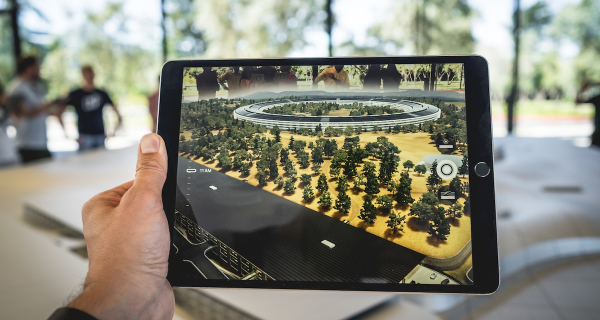Augmented Reality (AR) has been around since the early 2000s, but it is only recently that the technology has become widely available and accessible for use in a variety of industries. AR blends digital elements with the physical world, creating new experiences and opportunities for people to interact with information. In this blog post, we’ll explore what AR is, its types, practical applications, challenges and future opportunities.
What is Augmented Reality?
Augmented reality (AR) is an interactive experience of a real-world environment in which objects that exist in the physical world are “augmented” by computer-generated perceptual information. The technology combines 3D virtual reality with real life scenarios to create a more immersive experience for users. For example, using AR you can view a 3D model of an object on your tablet or phone screen as if it were right in front of you in the room – allowing you to get up close and personal with something without actually being there.
Types of Augmented Reality
There are two main types of augmented reality: marker-based and markerless AR. Marker-based AR uses physical markers such as QR codes or symbols to trigger digital content on devices such as smartphones or tablets. Markerless AR uses GPS location data or computer vision technologies like face recognition to trigger digital content without relying on markers. There are also several subtypes of markerless AR such as location-based, surface-based, area-based and projection/contour-based AR. Each type of AR has its own advantages and disadvantages depending on what type of application it is being used for.
Practical Applications for Augmented Reality
AR has become increasingly popular for automotive showrooms and advertising campaigns due to its ability to create highly immersive experiences for consumers. It can also be used for educational activities such as virtual field trips or interactive games that make learning more fun and engaging for students. Print media catalogues have become increasingly interactive through persuasive content and imagery thanks to advances in augmented reality technology – allowing customers to view more detailed information about products before they buy them online or in stores. Challenges & Future Opportunities with Augmented Reality
Despite all its potential benefits, there are still some technical limitations when it comes to developing immersive experiences with AR due to the current availability of computer vision and image recognition technologies. Additionally, adoption rates are still relatively low due largely due to cost or lack of consumer knowledge on how to effectively use the technology. However, more companies are investing in research & development into new applications in this field – paving the way for more widespread adoption in the near future!
Conclusion:
As augmented reality technology continues to evolve we will start seeing even more innovative ways it can be used across industries from retail shopping experiences to education activities that make learning easier and more enjoyable for students around the world! With its potential endless possibilities, now is an exciting time for project founders and CEOs looking into leveraging this emerging technology for their business needs! By understanding both current challenges associated with augmented reality usage as well as opportunities that come along with it – these organizations can be sure they’re making informed decisions about their investments into this promising field!


